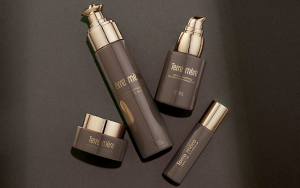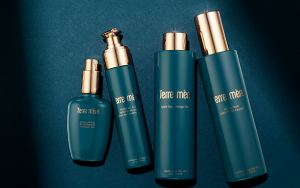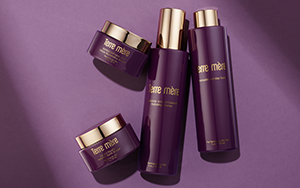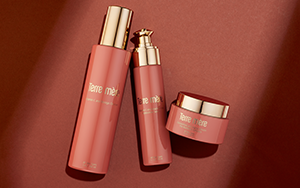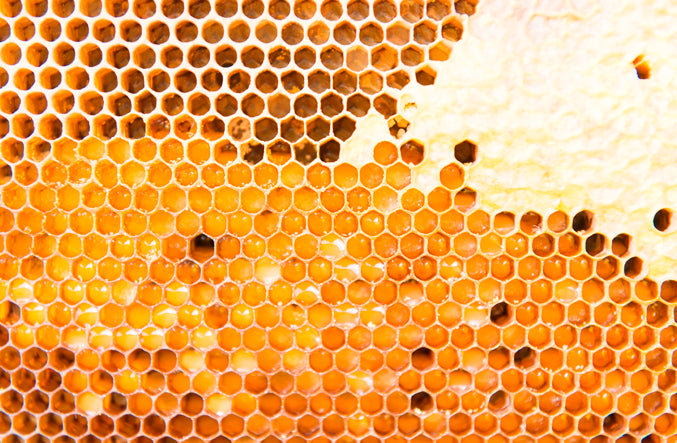
The cosmetics industry is abuzz with honey bee products. From lipsticks to hand salves to eye creams, drugstore shelves are filled with products that contain ingredients from bees. And while natural, bee-derived ingredients may seem harmless enough, there are a few factors to consider before buying them.
Bee exploitation is one of them, since honey bees are technically agricultural animals. Akin to cattle, chickens, and pigs, they’re bred on an industrial scale in cramped quarters. On large-scale honey bee farms, queen bees are stripped of their wings so they can’t leave their colonies, bees are smoked in their hives to lower their panic response to humans, and beekeepers replace honey with a cheap sugar substitute that’s less nutritious for bees.
But bee-lieve it or not, beekeeping has environmental implications, too. That means that, yes, while products like beeswax and propolis are technically natural, harvesting those ingredients for use in cosmetics plays a role in environmental degradation. Here’s how.
Honey Bees Spread Disease
Bees that produce honey on an industrial scale in the U.S. are often shipped around to pollinate various crops. Honey isn’t produced year-round, so beekeepers rent their colonies to farmers whose crops need pollination. Not only does this disrupt the bee’s natural hibernation cycle, but frequent travel to various regions could result in the spreading of diseases, like deformed wing virus and Varroa mite. These pathogens can transfer from managed hives into wild bumblebee populations, spreading through wild bee species when they land on the same flower.
Harvesting of royal jelly is another contributor to the spread of disease. Royal jelly is a protein-rich goo secreted by worker bees to feed to larvae. But not all larvae get a taste: it’s reserved only for the larvae that will grow up to become queen bees. Royal jelly is an extremely rich and nutritious substance, which is why it’s been harvested by humans for use in cosmetic products for centuries.
To harvest royal jelly, beekeepers set up fake hives to lure nurse bees into filling them with the nutritious secretion. These hives are filled with honey bee eggs and don’t contain a queen. Before the eggs are able to hatch, beekeepers remove them to cultivate the royal jelly, killing the larvae inside.
Royal jelly cultivation has damaging environmental effects because beekeepers often breed different species of bees, which can lead to disease within the population. Those diseases can then spread to other pollinators, such as birds, butterflies, wasps, bats, moths, and small mammals.
Propolis, a compound created when bees mix their own secretions with evergreen sap, is also not exempt from the detrimental effects of bee products. Propolis is used as an emulsifier and an antibacterial and antifungal agent in cosmetics, but research points to evidence that it’s necessary for the immune health of bees. When humans harvest propolis from honey bee colonies, it effectively undermines their immune systems and makes them more prone to developing diseases.
Bee Products: Not So Natural After All
Untouched by human hands, bee products like honey, propolis, and royal jelly are natural. But once humans get involved in the production process, those products come into contact with toxins and pesticides, which are dangerous to both human and environmental health.
Beeswax is one of those products.
Beeswax is created by melting a honeycomb with boiling water before straining and cooling it. Thanks to its moisturizing properties, used in various cosmetics products such as lipstick, lip balm, hand cream, salves, and mustache wax.
Both in the U.S. and abroad, the beeswax industry is largely unregulated. This gives producers leeway to add harmful chemicals, additives, and other toxins into their beeswax without fully disclosing it. According to one 2018 study, more than 75% of beeswax samples contained alarmingly high levels of miticides used in beekeeping.
What’s more, some beeswax is cut with an additive called paraffin to slash production costs. Paraffin is a derivative of crude oil, so it comes as no surprise that when it’s burned, it releases dangerous pollutants into the air. Breathing in paraffin can be compared to breathing in diesel fumes, which are known carcinogens and pollute the natural atmosphere.
Buh-Bye, Biodiversity
Honey bees are generalist foragers, meaning they’ll capitalize on any opportunity they can get to soak up floral resources. As a result, the vast amounts of honey bees raised to make products like honey, beeswax, and propolis threaten the wild bee species and other native pollinators. And without bees, the Earth suffers: bees are responsible for pollinating about one sixth of the flowering plant species worldwide, including around 400 different types of agricultural plants. Ultimately, beekeeping has pervasive and negative impacts on biodiversity, which disturbs the health of local ecosystems and the greater environment altogether.
As consumers, every dollar we spend is a vote for what kind of products we’re willing to consume, as well as a vote for the kind of world we want to live in. With our purchasing power, we can decide to give the bees a break and conserve the environment while we’re at it. As the saying goes: bee the change you wish to see in the world!


